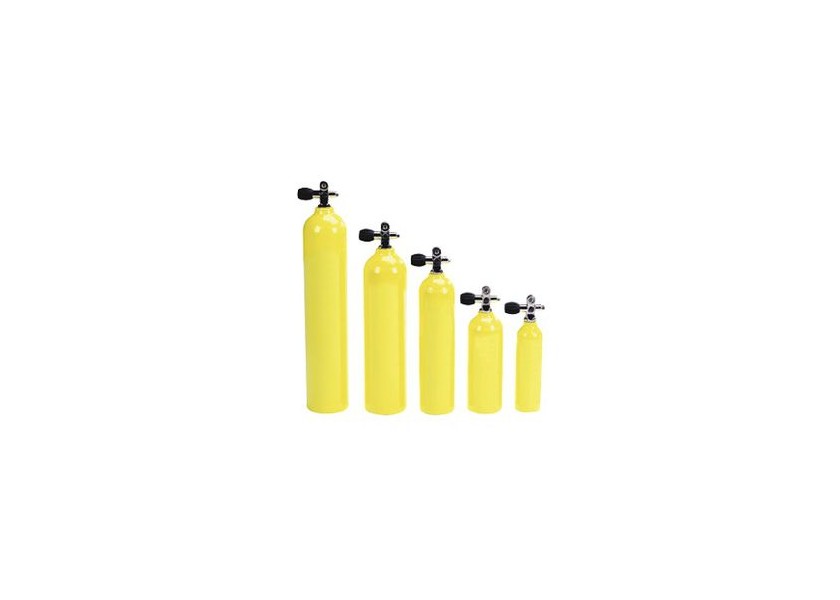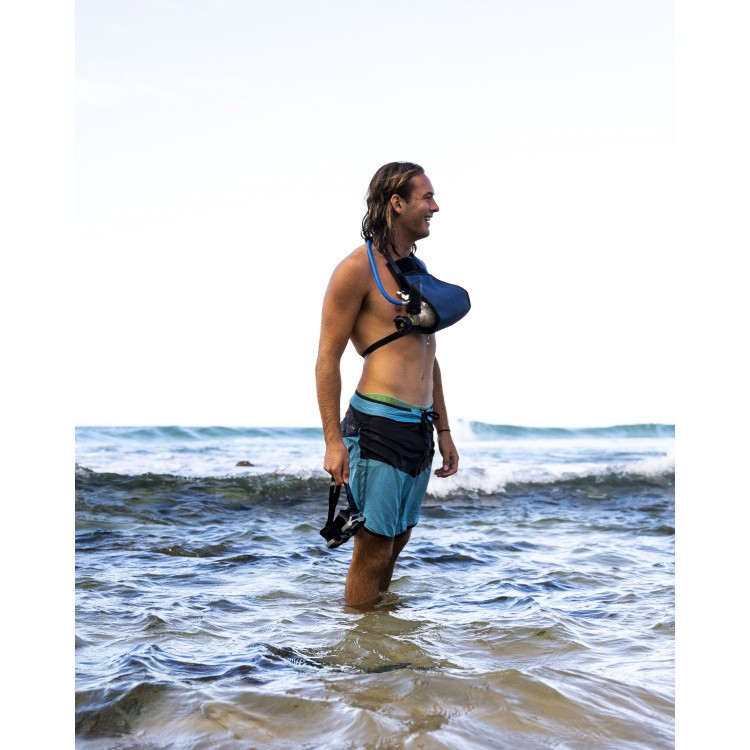
Mini tanks, which size to choose ?
Mini tanks, which size to choose ?
The choice of the size of the mini scuba tank is very important and depends on several factors, that's what we will try to discover in more details just after. From 0,2 l to more than 15 liters, there is something for every taste and need.
If you haven't made up your mind yet, then read this article to find out everything you need to know to get started on your next dive.
What are the different sizes of a mini scuba tank?
A scuba tank has several characteristics such as its material, size, diameter and weight. The smaller the tank, the longer it will tend to be.
For the ergonomics and more generally the way of using the mini tank, there are tanks that are worn directly in the mouth, these tanks are of a very simple design, they include a cylinder and a regulator on which is fixed a mouthpiece that allows to breathe the air of the tank, a pressure gauge is also present to check the air pressure of the tank. There are also "traditional" cylinders, the cylinder is connected to a valve in which a 1st stage regulator is screwed, then a flexible hose and a 2nd stage regulator that is held in the mouth. In the case of traditional equipment, the cylinder is held with a harness.
MiniDive has in its range of cylinders that are held in the mouth, minidive Evo and minidive evo+ in aluminum and carbon. But also bottles that can be worn with a harness, from 0.5 liters to 2 liters.
The different sizes also mean different autonomy:
A very small 0.5l aluminum cylinder can have 5 to 10 minutes of autonomy under water. A small 0.5l carbon tank can have a maximum underwater autonomy of 12 minutes.
A 1 liter tank, will have an autonomy of 15 minutes to 25 minutes maximum.
A 2l scuba tank, will have an autonomy of 30 minutes to 40 minutes maximum.
A 3l scuba tank will have an autonomy of 45 minutes to more than one hour.
A 5l scuba tank, will have an autonomy of more than one hour up to 2 hours
A 12 liter tank will potentially have an autonomy of several hours just like the 15 liter tanks. Note that the larger the tank size, the more the diver will tend to consume because he does not feel he has a limited amount of compressed air.
On these diving blocks it is possible to screw in several types of valves, there are DIN and bracket valves, each of which can have a pressure of 200 bar or 230 bar or 300 bar.
To sum up, small cylinder size = small autonomy
Small scuba tank, which materials to choose ?
A small diving cylinder can be made of aluminum or carbon.
Aluminum cylinders have a working pressure of 200 bar where carbon cylinders have a working pressure of 300 bar which, with the same volume, allows to store more air in a carbon cylinder.
Both types of cylinders can operate at the same depth and have no limit due to their materials, MiniDive advises 3 meters of depth for non divers.
Then, it is necessary to know that both cylinders are very resistant to pressure, but the carbon cylinder has a lesser resistance to shocks especially if they are pointed, in the case where the shock would be deeper than the thickness of epoxy protection, a point could pierce the carbon fiber which is a non-full material, an aluminum cylinder does not have this type of defect.
An aluminum cylinder will have a smooth, shiny or matte but plain finish. A carbon scuba tank will have a carbon fiber appearance, more or less dense and a light or dark color depending on the fiber. Carbon cylinders are often preferred for their aesthetics over aluminum cylinders, and carbon has its own technical properties that are often emphasized in the sport. Carbon bottles are lighter than aluminum bottles due to the very characteristic of carbon.
Finally, it is important to note that carbon material is more expensive than aluminum material, the difference can sometimes be 1 to 10.
At MiniDive we have a 1l carbon mini scuba tank but also a 2l one. Aluminum tanks are only available up to 0.8L
What are the uses of this diving equipment?
The uses of this diving equipment are numerous, they are mainly leisure, that is to say simply discovering the beauty of the fauna and flora under the sea but also much more useful as the maintenance of the hull of his boat and more generally of what happens under the hull of his boat. The use can also be civil with the control of underwater installation, the need of the inspectors being a small, compact, reliable and light device, minidive fills very well all these tasks. Finally the military use is part of the specific uses of the mini scuba tank whose utility is not only to breathe under water but also in the air.
Divers who breathe underwater often consume more fuel than those who breathe on the surface.
What is the price of a mini tank ?
The price of a mini tank will vary according to several criteria including its size and material, the carbon mini tanks are more expensive than aluminum tanks for the same volume. In terms of size, the larger the tank, the more expensive it is.
A mini cylinder must always be associated with a means of recharging, at least for a first purchase, because the diving cylinder alone cannot be recharged, it requires a manual or electric pump (compressor) or a transfer lyre, also called a DIN filling station or bracket. The price of a diving kit or diving pack varies from 349€ to 2499€ depending on the material of the tanks, the size of the tank, the number of tanks but also the way of refilling. It is advisable to find out what your needs are before ordering in order to get the best adapted products.
But be careful, the mini tanks with manual pump or compressor are very often more accessible than a classic diving tank.
Scuba diving must always remain a pleasure.
If you have any comments or questions related to this article, please let us know at contact@minidive.com


All comments